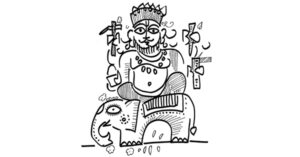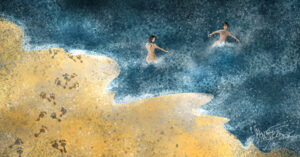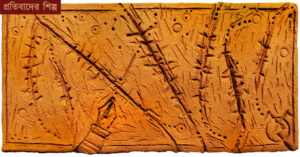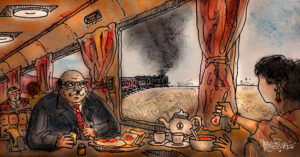The ‘Hawa’ of November
If it was possible to record the taste of air like one can check for acidity on pH paper, the record of North Bengal’s air would resemble a rainbow or a watercolour box. I say ‘taste of air’ by which I also mean its temperature. If – to continue with the trail of hypothesis – there was a particular time when I’d like to use the imagined air paper (let’s call it pA – potential of air, like pH is potential of hydrogen), I’d use it now. In November.
November seems like a secret smuggled in between the loudness of an Indian October, with its rituals and festivals, and the tremulous excitement of December, of the feeling of a holiday, of the season’s greetings as it were. In North Bengal, it comes to us through the air. The body responds like a thermometer, and, with every morning, a new layer of clothing is taken out. A cotton chadar, batik or a hint of Sambalpur, bought from Santiniketan or Puri, is remembered in the first week of November. It is enough for the morning and evening coolness of the air. It is worn more to invoke winter than as protection from the cold, for the cold has still not arrived. It has only sent its first messengers. The dew is one of them, and it begins spending the night and mornings on leaves and grass. The ritual of wiping the brother’s forehead with dewdrops collected on the morning of Bhai Phnota seems like an acknowledgement of its arrival, a hopeful appreciation of its stay over the next few months.
One late morning in mid-November the house will suddenly be filled with the smell of naphthalene – the blankets, aestivating for months, will be rushed to verandahs and terraces for sunlight, to fatten up and to lose their smell of naphthalene-sleep. And it will be winter. Sometimes people will say it a few times a day, to ensure that their words are coming true, later, like a truism, or even like a piece of information, as if it were a loved one’s birthday.
By the second week, the smell of the air has changed. Twigs and leaves – and now plastic – are being burnt on streets and in neighbourhood gatherings. From the terrace, if it is a clear evening, one can see the smoke climb up and disappear. In a month or so, the same smoke will acquire more body and spine – it will become stiffer in the cold air, almost vertebrate-like. It is not the smell alone that tinges the air. It is the chill, subtle but stubborn. One late morning in mid-November the house will suddenly be filled with the smell of naphthalene – the blankets, aestivating for months, will be rushed to verandahs and terraces for sunlight, to fatten up and to lose their smell of naphthalene-sleep. And it will be winter. Sometimes people will say it a few times a day, to ensure that their words are coming true, later, like a truism, or even like a piece of information, as if it were a loved one’s birthday.
The pA paper for determining the taste of air that I have imagined already exists in the minds of its residents. When we drove or cycled past Sukna’s Ila Pal Choudhury Memorial (Tribal) Hindi High School in the summer, we stuck out our tongues to taste the approaching mountain air like an ice lolly. Now we close our mouths, and the air slaps our cheeks and forehead like a masseur getting our blood circulation into life. By the time we are in Tindharia, the air is no longer a friend. It’s a thief, trying to sneak through any space that it can find, mostly the ears, and the eyes and mouth. As one climbs higher, the air becomes a person, a guest one would rather avoid meeting. But such is the charm of November, this in-between month, that everything and everyone, even this cold person, feels lovable.
In the Dooars, the air becomes fat. It is like Kumbhakarna now – by early afternoon in this approaching season of short days, it is lying supine over the top of the growing harvest on agricultural fields in this region. The end of a scarecrow’s scarf blows in the cold breeze, a grandmother tries to fight the wind persistently, adjusting the shawl on her head, a goat will look at the weak shadow of leaves shivering in the cold air and wonder whether it should try eating them.
Winter will, of course, be cold, as will be its air. But this is a different drama – one where the prologue to winter seems longer and more delightful than winter itself. Adurey thhanda, affectionate chill, or mishti thhanda, sweet cold – these phrases will annotate conversations, decisions around menus at home and picnics, and clothing. All of these will mark November as a season unto itself – a season of waiting for the real season. Every day the colour of the pA paper will change a little, but it’ll always be unpredictable, for there might be one warm day that will make us forget the soft cold of the days preceding it. In other continents, leaves change colour and fall, giving the season its name. We might have called this season ‘hawa’ – a word common to many languages spoken by the residents of north Bengal.
Illustration by Suvamoy Mitra






